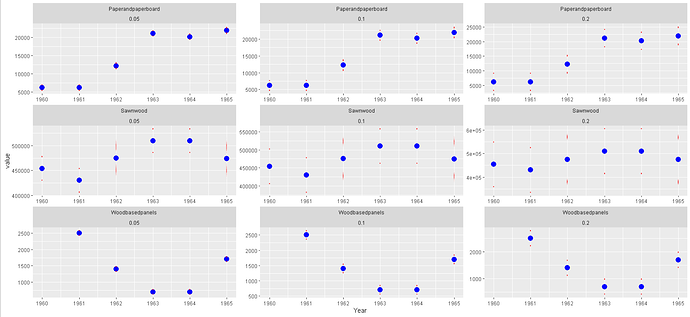Hi to all coders out there.
I have a data.frame time series with production values for harvested wood products. For a sensitivity analysis I want to assume 5%,10% and 20% errors in these values.
the data frame looks like this:
data.frame': 58 obs. of 3 variables:
Year; Wood-based panels; Sawnwood ; Paper and paperboard
1960 NA 454000 6200
1961 2500 430000 6200
1962 1400 475000 12200
1963 700 510000 21100
1964 700 510000 20200
1965 1700 474000 21900.
How would you guys and gals do that? I would like to draw random values from a normal distribution, assuming a certain sd and loop that a 100 times? How do I do this?
Thanks in advance
